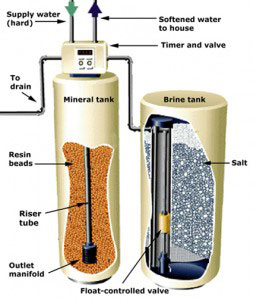WATER SOFTNER PLANT
We are also a leading name in the field of offering softners. These assist in effective removal of divalent cat ions like calcium or magnesium from water that is generally classified as hard water. Hard water is unsuitable for many industrial as well as domestic applications as these have the power to destroy the power of soaps and have tendency to form scales in equipment like in engine jackets, boilers, pipelines.
Hence, it is of utmost importance that the water is treated with softening agents to remove or alter the constituents of water. These softners are especially designed to handle the calcium and magnesium minerals that are dissolved in water and make it hard and lead to poor soap and detergent performance. Water softening units offered can provide vital assistance in continuous removal of calcium and magnesium. Further, as these operate on ion exchange process, these deliver superior functionality standards in the involved process as described below:



Process:
1. Water passes through media bed comprising sulfonated polystyrene beads that are supersaturated with sodium
2. The ion exchange process taking place as hard water pass through softening material
3. All hardness minerals get attached to resin beads while sodium on resin beads is released simultaneously into water
4. As resin becomes saturated with calcium and magnesium, it needs to be recharged
5. Recharging involves passing salt (brine) solution through resin
6. Sodium replaces calcium and magnesium that are discharged in waste water
7. Hard water treated with ion exchange water softener has an addition of sodium
Advantage:
Water softener system offered work efficiently in the task of softening water and removing the minerals that cause water to become hard. Some of the advantages of the system include:
Sizing and Design Customization
How to determine the correct size of an Industrial Water Softener? It is a general question asked by many buyers. We provide practical advice and design guidelines on setting up water softener for industrial and commercial use. Size or capacity and design depend upon many factors such as, flow rate requirements (LPH or GPD), TDS level and Regeneration frequency etc.
Industrial Water Softener Applications